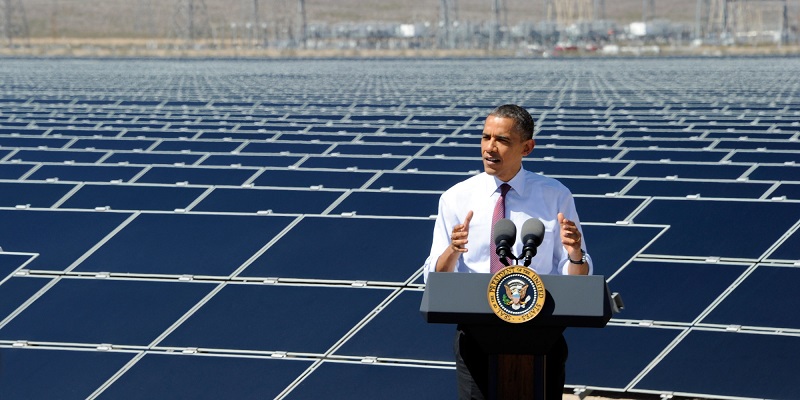In the face of global climate change, increasing the use of renewable energy resources is one of the most urgent challenges facing the world. Further development of one resource, solar energy, is complicated by the need to find space for solar power-generating equipment without significantly altering the surrounding environment.
New work from Carnegie’s Rebecca R. Hernandez (now at University of California Berkley), Madison K. Hoffacker, and Chris Field found that the amount of energy that could be generated from solar equipment constructed on and around existing infrastructure in California would exceed the state’s demand by up to five times. It is published by Nature Climate Change.
“Integrating solar facilities into the urban and suburban environment causes the least amount of land-cover change and the lowest environmental impact,” Hernandez explained.
Just over 8 percent of all of the terrestrial surfaces in California have been developed by humans—from cities and buildings to park spaces. Residential and commercial rooftops present plenty of opportunity for power generation through small- and utility-scale solar power installations. Other compatible opportunities are available in open urban spaces such as parks.
Likewise, there is opportunity for additional solar construction in undeveloped sites that are not ecologically sensitive or federally protected, such as degraded lands.
“Because of the value of locating solar power-generating operations near roads and existing transmission lines, our tool identifies potentially compatible sites that are not remote, showing that installations do not necessarily have to be located in deserts,” Hernandez said.
This study included two kinds of solar technologies, photovoltaics, which use semiconductors and are similar to the solar panels found in consumer electronics, and concentrating solar power, which uses enormous curved mirrors to focus the sun’s rays. A mix of both options would be possible, as best suits each particular area of installation, whether it is on a rooftop, in a park, on degraded lands, or anywhere else deemed compatible or potentially compatible. They found that small- and utility-scale solar power could generate up to 15,000 terawatt-hours of energy per year using photovoltaic technology and 6,000 terrawatt-hours of energy per year using concentrating solar power technology.
Overall the team found that California has about 6.7 million acres (27, 286 square kilometers) of land that is compatible for photovoltaic solar construction and about 1.6 million acres (6,274 square kilometers) compatible for concentrating solar power. There is also an additional 13.8 million acres (55,733 square kilometers) that is potentially compatible for photovoltaic solar energy development with minimal environmental impact and 6.7 million acres (27,215 square kilometers) also potentially compatible for concentrating solar power development.
The team’s work shows it is possible to substantially increase the fraction of California’s energy needs met by solar, without converting natural habitat and causing adverse environmental impact and without moving solar installations to locations remote from the consumers.
“As California works to meet requirements that 33 percent of retail electricity be provided by renewable sources by 2020 and that greenhouse-gas emissions be 80 percent below 1990 levels by 2050, our research can help policymakers, developers, and energy stakeholders make informed decisions,” said Field, director of Carnegie’s Department of Global Ecology. “Furthermore, our findings have implications for other states and countries with similarly precious environmental resources and infrastructural constraints.”
References:
Publication: Rebecca R. Hernandez, Madison K. Hoffacker, Christopher B. Field. Efficient use of land to meet sustainable energy needs. Nature Climate Change, 2015
Story: Solar could meet California energy demand three to five times over | Carnegie Institution — March 16, 2015














Comments